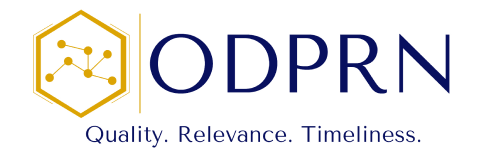The ODPRN has completed a drug class review of treatments for overactive bladder (OAB). The final reports, summary of the research findings and reimbursement option recommendations are available below:
Final Reports and Reimbursement Options
- Consolidated Final Report and Reimbursement Option Recommendations
- OAB Pharmacoepidemiology Report
- OAB Pharmacoepidemiology Supplement
- OAB Pharmacoeconomics Report
- OAB Environmental Scan Report
- OAB Systematic Review Report
- OAB Qualitative Report
- OAB Citizen’s Panel Report
Click to view the complete infographic
Summary of Drug Class Review Findings: Overactive Bladder Agents
Download a PDF of this Research Summary
The Ontario Drug Policy Research Network (ODPRN) conducted a drug class review on the effectiveness, safety, and accessibility of drugs used in the management of overactive balder (OAB) as part of an initiative to modernize the public drug formulary in Ontario. OAB is a common condition that increases with age. The most frequent symptom of OAB is a sudden urge to urinate, that may or may not result in incontinence.
Anticholinergics are the main medications used to treat OAB; there are six of them available in Canada and their listing and formulations on public drug plans vary, some also have generic versions available. Another drug, mirabegron, has also recently become available and is increasingly being used.
What did we find?
Efficacy
Overall, the agents were similar in efficacy and most of the drugs (except the oxybutynin patch) were better than placebo for reducing symptoms of OAB. No agent was significantly better than oxybutynin immediate release (IR).
Safety
All of the drugs are relatively safe (in terms of serious side effects), but most cause dry mouth and constipation, which may result in a patient discontinuing the drug. Oxybutynin IR is not as well tolerated as other medications whereas mirabegron was generally better tolerated than all the other oral drugs. Additionally there is some concern about the use of these drugs in the elderly due to risk of falls and effects on cognition.
Solifenacin is the most cost effective therapy for the treatment of OAB; however, if solifenacin is not effective for a patient, then oxybutynin IR is also a cost-effective option.
With the introduction of generic solifenacin, overall expenditures for the OPDP are expected to decrease about 3% (from $37.5 million annually to $36.4 million annually).
Accessibility
There were no accessibility issues identified as all of the drugs used to treat OAB are available on the ODB formulary. There were over 73,000 users of drugs for management of OAB in 2014-15.
Recommendations for consideration
Use of oxybutynin IR or solifenacin or tolterodine extended release (ER) as initial therapy; all other currently listed OAB medications Limited Use.
- Oxybutynin IR, solifenacin, and tolterodine ER are considered first line therapy based on arguments of efficacy, safety and cost-effectiveness.
- Physician participants prefer use of long-acting agents, such as solifenacin and tolterodine ER. This option provides initial treatment choices for the physician.
- At current prices, mirabegron, fesoterodine, trospium, darifenacin, oxybutynin ER, transdermal oxybutynin, oxybutynin gel, and tolterodine IR are not cost effective. If the price of tolterodine IR is reduced to 25% of brand-name price, this drug may also become cost-effective.
Other considerations
- No listing is recommended for oxybutynin extended release (Ditropan XL)
- It does not provide any advantages over other currently available OAB medications for patients unable to swallow nor is it cost effective (at current prices)
- For patients unable to swallow, we recommend listing oxybutynin gel (Gelnique) under the Exceptional Access Program
- The gel has similar efficacy to the other drugs, and fewer patients experience dry mouth when using it. As well, it can be used for patients unable to swallow
- All anticholinergics, including oxybutynin IR, should have a Therapeutic Note, cautioning about the use of the drugs in the elderly
- There is currently a note in the Limited Use criteria cautioning about the use of these drugs in the elderly and it should be extended to all anticholinergic agents, including oxybutynin IT which currently does not have one. The therapeutic note does not apply to mirabegron, a beta-3 adrenoceptor agonist
How did we conduct our studies?
The ODPRN conducted a drug class review consisting of multiple studies: a qualitative study to determine the experiences of use and prescribing; a systematic review to determine efficacy and safety; a pharmacoepidemiological analysis to determine patterns of use in Ontario and across Canada; an environmental scan to determine national and international guidelines and public drug coverage models; and pharmacoeconomic analyses to determine the cost of public drug funding under different coverage policies. Detailed descriptions of each of these studies are available at the ODPRN website: www.odprn.ca
Final Comprehensive Research Plan
- OAB Comprehensive Research Plan Overview
- OAB Pharmacoepidemiology CRP
- OAB Pharmacoeconomics CRP
- OAB Environmental Scan CRP
- OAB Systematic Review CRP
- OAB Qualitative CRP
Stakeholder Feedback
Comments from stakeholders on draft Reimbursement Option Recommendations
Any questions? Contact us at info@odprn.ca.
